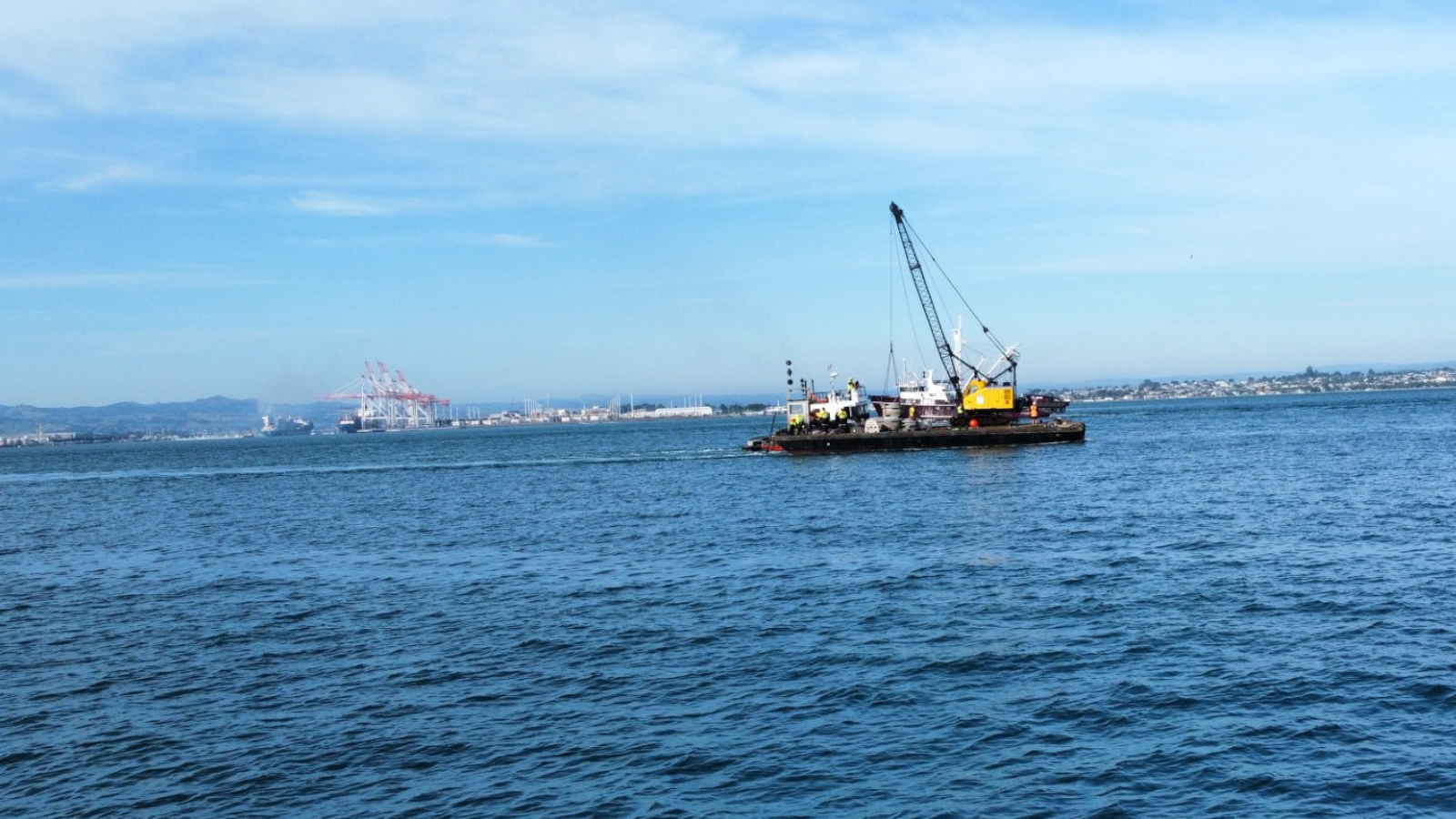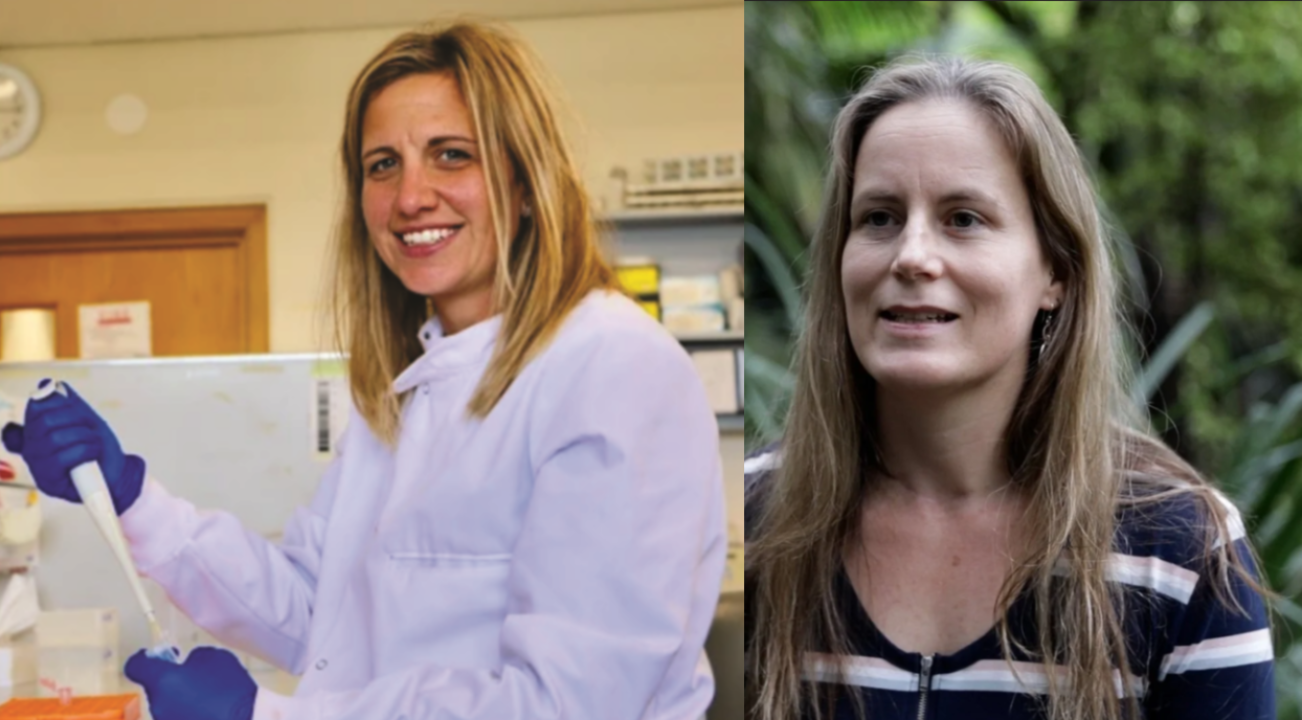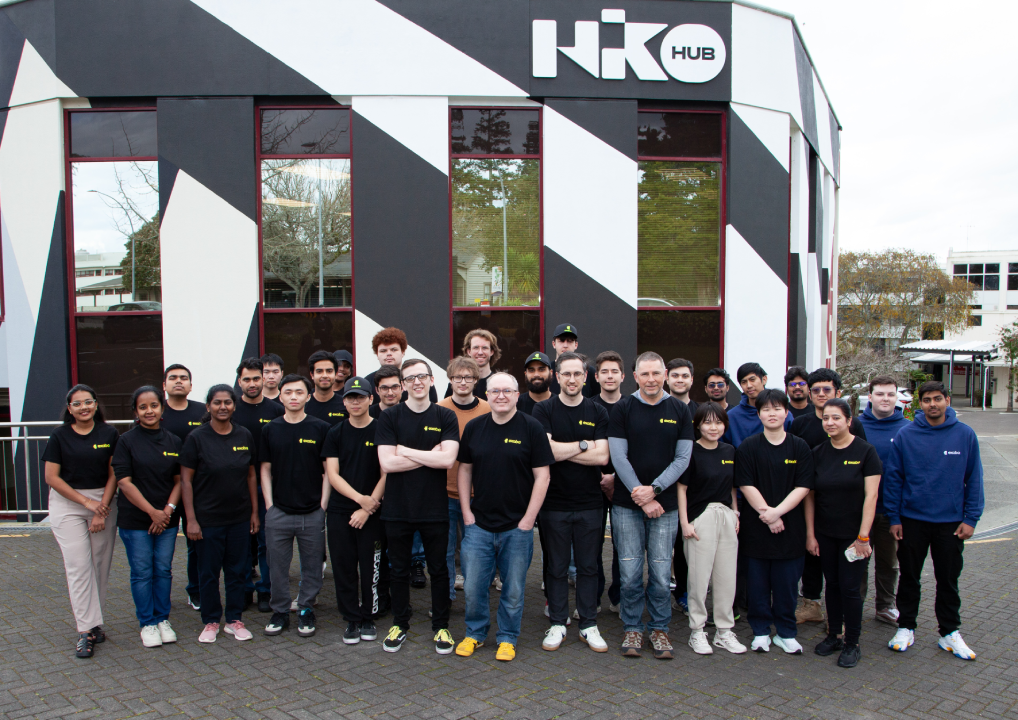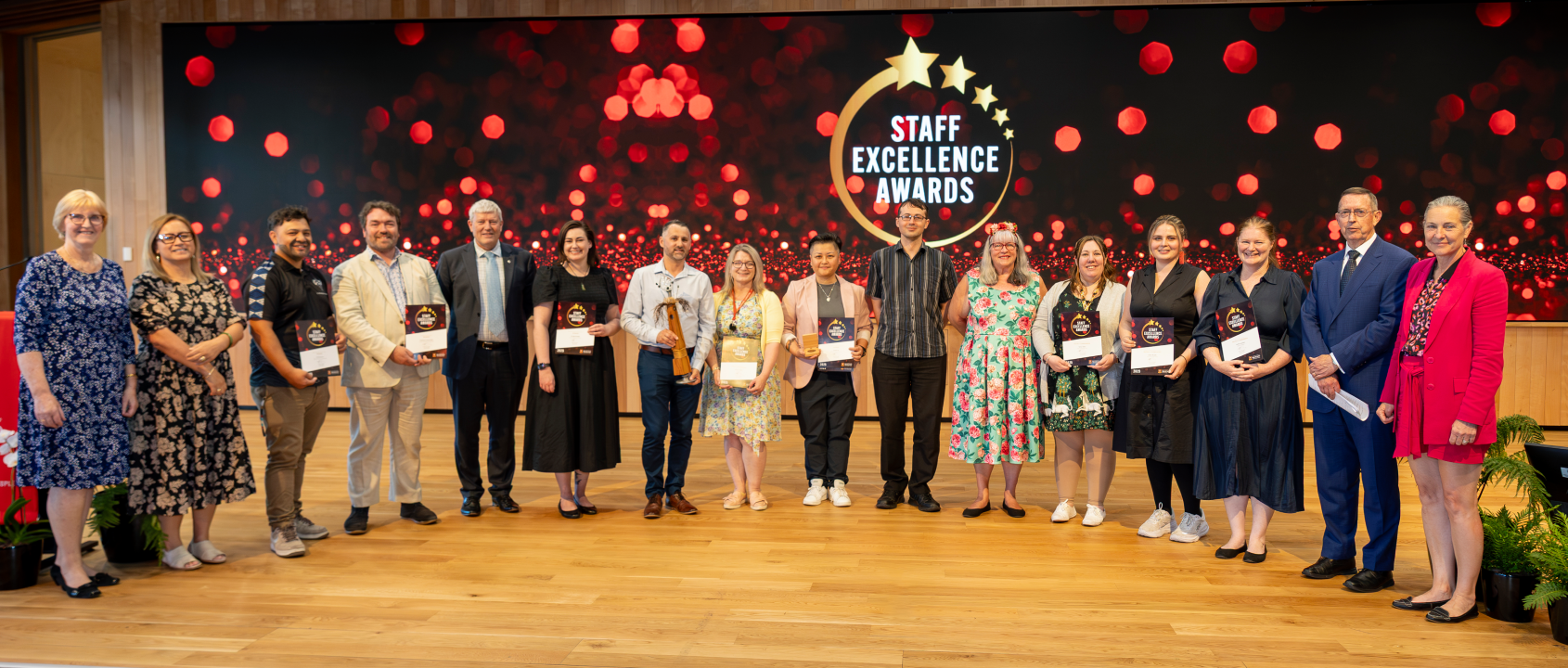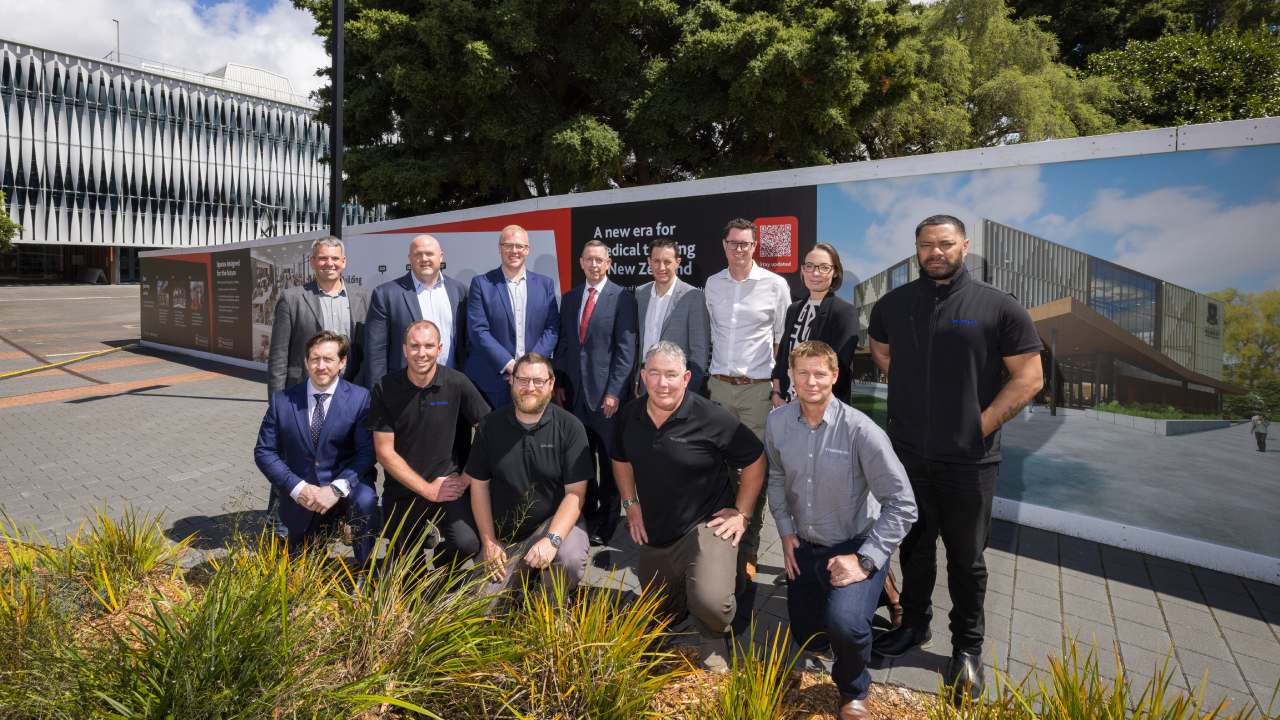A new initiative to enhance the resilience of marine life to the effects of climate change and human impact has launched in Tauranga Harbour.
Nine regenerative artificial reef systems have been deployed in the water to biomimic the habitats of our natural marine ecosystems in a bid to restore and protect biodiverse native marine life.
The project is a consultation between Deep Dive Division, the University of Waikato, local iwi, Hynds Pipe Systems Ltd and the Port of Tauranga.
The reefs, named Peara, meaning “pearl” in te reo Māori and symbolising the nucleus of change, growth and life, were developed by Deep Dive Division co-founder Tua Karalus in response to the devastation caused by Cyclone Gabrielle, which wiped out a significant amount of marine life along the East Coast.
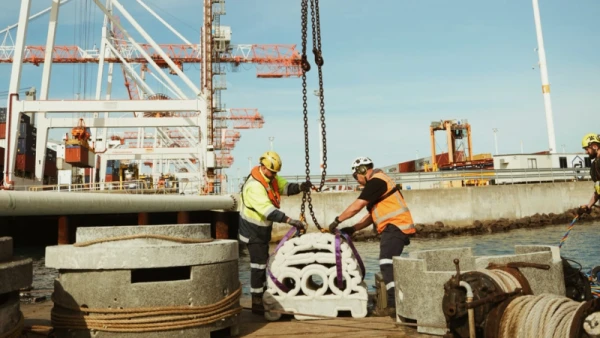
The Deep Dive Division team preparing for the deployment of the artifical reefs.
“It was devastating for local iwi and communities,” says Mr Karalus. “That was the motivation for me to create a solution that helps restore and protect this taonga.”
Deep Dive Division is New Zealand’s only Māori and Pacific-owned commercial and scientific dive company. Mr Karalus says the team is committed to developing solutions that protect freshwater and marine environments, with a strong focus on regenerative outcomes. “Being able to deliver this innovative solution is a huge milestone for us.”
“Working with the Port of Tauranga has been a positive and collaborative experience. Rowan Johnstone, Pat Barrow and Fenna Beets (from the Port’s engineering, civil works and environmental teams) have been incredibly supportive of our vision for regeneration in the harbour. Their backing has created a meaningful opportunity to enhance marine ecosystems.”
Peara marks the first time these reef systems are being tested in a live marine environment. Tauranga Harbour was chosen for its accessibility and suitability for close monitoring by Deep Dive Division’s commercial divers, alongside marine science researchers and students from the University of Waikato.
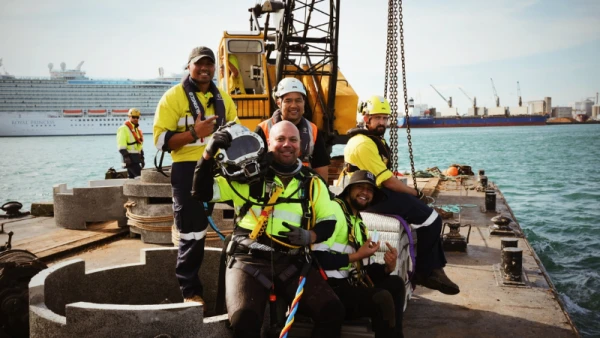
The team at Deep Dive Division get ready to send the artificial reef to the ocean floor.
University of Waikato Professor Chris Battershill and Professor David Schiel from the University of Canterbury have been leading Ministry of Business, Innovation and Employment (MBIE)-funded research to assess marine life loss in the Eastern Bay of Plenty.
Professor Battershill has worked closely with Mr Karalus on the development of Peara, providing scientific guidance on the conditions needed for marine ecosystems to regenerate. The Peara reefs are designed to support the growth of seaweed and shellfish, act as a wave break, and attract marine life. Inbuilt harmonics also help deter whales and reduce the risk of beaching. By introducing hard substrates, such as natural marine rock or engineered structures like Peara, the reefs provide essential footholds for marine life to grow in sandy or silty environments that typically lack structure.
“The physical design of the reef structures, including their acoustic attributes, is informed by mātauranga Māori to encourage colonisation by native marine plant and animal species suited to harbour environments,” says Professor Battershill.
“These native colonisers help resist the spread of invasive species. Specifically, native kelps such as Ecklonia and Carpophyllum forest species, along with mats of turfing red seaweeds, provide habitat for important taonga like crayfish, kina and other invertebrates that also serve as food for fish. These reef outcrops offer refuge for marine biodiversity that is now rare or absent in the harbour.”
Mr Karalus says it was this understanding of how structure can restore and regenerate marine life that sparked the collaboration. “Chris was the catalyst for my passion in marine science when I was at the University of Waikato, especially his knowledge of sponges. Our shared knowledge has created something uniquely suited to New Zealand’s marine heritage.”
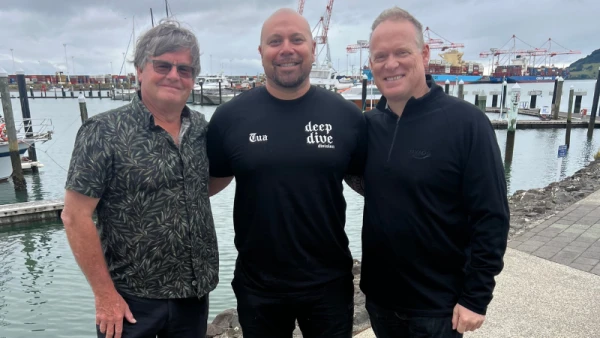
Chris Battershill, Tua Karalus and Aaron Hynds
The reef systems are the first of their kind in New Zealand. Six of the structures were manufactured at Hynds Pipe Systems Ltd under the leadership of Hynds Holdings Director and R&D Director Aaron Hynds, while the remaining three were constructed using a unique 3D concrete printing technique.
Incorporating both function and cultural meaning, the tailored reef designs support marine life while reflecting mātauranga Māori and Pacific iconography such as the koru, in line with the kaupapa of Deep Dive Division. Mr Karalus and co-owner Courtney Karalus (Ngati Haaua) describe them as “social housing underwater”.
Monitoring will be carried out by researchers and students through dive surveys, underwater cameras and hydrophones. Data from the hydrophones will be analysed by Dr Jenni Stanley, an international marine acoustics expert from Woods Hole Oceanographic Institution (USA), now back home working at the University of Waikato in Tauranga.
PhD candidate Kia Maia Ellis (Ngāi Te Rangi, Ngāti Ranginui, Ngāti Ruanui) will monitor the reefs for pēpi kōura (baby crayfish) as part of her research project, Pēpi Kōura: A transdisciplinary mātauranga Māori and science approach to enhancement and resilience of puerulus kōura in a changing climate. The research will explore whether these crayfish can be nurtured to adulthood in captivity then returned to the ‘safe haven’ nursery of Peara Reefs, to safeguard the species’ future.
Deep Dive Division will also install AI-enabled cameras to capture and analyse real-time data, tracking species growth, behaviour and environmental factors such as water salinity and temperature. Over time, this data will inform future reef placement and biodiversity strategies.
The trial is scheduled to run for an initial period of 24 to 36 months.
